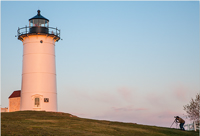Petapixel Articles
How to Use Leading Lines in Photography by John Tunney “You don’t take a photograph, you make it,” Ansel Adams once said. Great point, but let’s take it a step…
How to Use Leading Lines in Photography by John Tunney “You don’t take a photograph, you make it,” Ansel Adams once said. Great point, but let’s take it a step…
PhotoPills is a planning tool to help you create images of the Sun, Moon, stars, meteors, and more. It can help you decide the best place to focus for maximum…
The rule of thirds is widely considered to be one of the most important first techniques you can learn to create better compositions and help you progress from “taking…
If you want to become a better photographer, learn more, get and stay inspired, meet others who share your passion and make new friends, well, nothing beats a camera club.…
The Orpheum Theater in Chatham, MA, made a short video about me to coincide with a planned exhibition of my images. Unfortunately, the exhibit was cancelled due to Covid-19. However,…
Cape Cod's surfers are great fun to watch and interesting to photograph. Like most sports, surfing is filled with moments of action, grace and beauty. I've compiled a short slide…
 The best lenses for photographing the Milky Way are fast wide-angles. By “fast” I mean a lens with an f-stop of f2.8 or lower. You can get away with an f4 lens, but an f2.8 lens is better. Every full stop down collects twice as much light as the previous stop. So an f2.8 lens will collect twice as much light as an f4 lens. This means you can use a lower iso, which means less noise. It also mean you can opt for a shorter shutter speed, which means less streaking of the stars.
The best lenses for photographing the Milky Way are fast wide-angles. By “fast” I mean a lens with an f-stop of f2.8 or lower. You can get away with an f4 lens, but an f2.8 lens is better. Every full stop down collects twice as much light as the previous stop. So an f2.8 lens will collect twice as much light as an f4 lens. This means you can use a lower iso, which means less noise. It also mean you can opt for a shorter shutter speed, which means less streaking of the stars.
Wide Angles
A wide-angle lens will let you capture more of the sky and include foreground elements for a better composition. For full-frame cameras, stick with 24mm or less. You can get nice shots with longer focal lengths, especially if you shoot to stitch a panoramic, but 24mm or less will generally give you the most pleasing single-shot results.
For APS-C cameras, stick in the 10-16mm range. This will give you the full-frame equivalent of roughly 15-24mm.
Here’s a short list of useful apps and websites to help you plan your outdoor photo shoots…
(more…)
Too many people, some of them photographers, don’t realize the importance of editing in the creation of a photograph. In many cases, it’s a 50-50 deal — half capture and half processing. (more…)
 Nobska Lighthouse, Woods Hole
Nobska Lighthouse, Woods Hole
Nobska is one of the Cape’s most popular and photographed lighthouses. it sits high on a hill overlooking Vineyard Sound with views out to Martha’s Vineyard. It offers decent photo potential most of the day with the best light late in the day toward sunset.